Aldwell-Schachter Chapter 19
Click on a musical example for playback
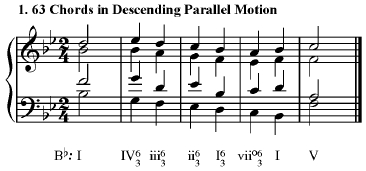
In four voices, voice-leading can be rather tricky. Notice that soprano, alto and bass are all moving along very nicely in parallel. The fourth voice (in this case the tenor) has to leap around somewhat in order to avoid voice-leading problems. This progression originates in the very early Renaissance as fauxbourdon and pre-dates four-voice harmonic styles.
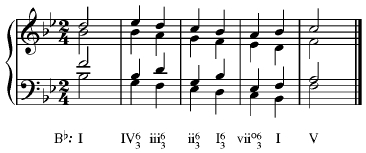
Alternate tenor line.
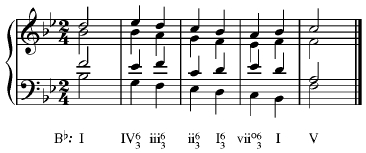
Another alternate tenor line.
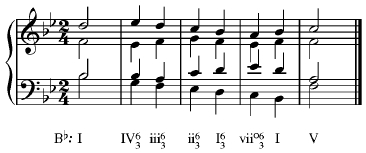
Yet another alternate tenor line; in this solution, both the alto and tenor are moving around somewhat in order to provide more variety in the voicing.
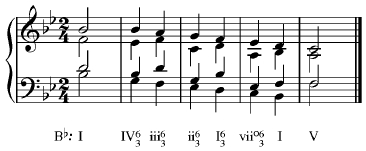
It isn’t absolutely necessary for the soprano to move in parallel sixths with the bass. Here, the soprano moves in parallel tenths.
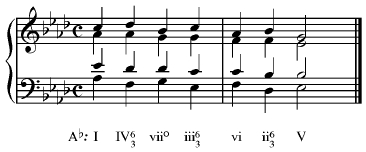
Parallel 63 chords can be broken by alternating them with 53 chords. This particular example therefore results in a descending fifths sequence.
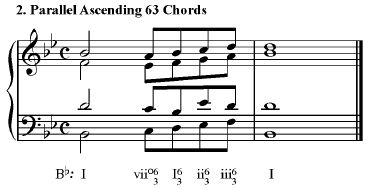
Ascending 63 progressions are perfectly common, even though at face value this progression does not appear to follow functional expectations. In particular, the iii63 which seems out-of-place; normally we would expect a V here. However, because iii63 shares two common tones with V, and because of the ‘kinetic energy’ built up by the previous three 63 chords, the ear buys into it and accepts the iii63 as a decorated dominant triad.
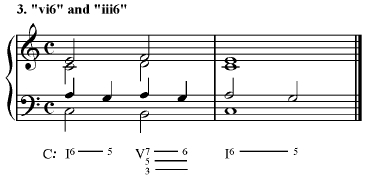
It would be rather silly to refer to the chord on the downbeat of both measures as vi6—it is obviously a tonic triad. Along the same lines, the vii7 on beat three of measure 1 is heard clearly as a V65 with an appoggiatura.
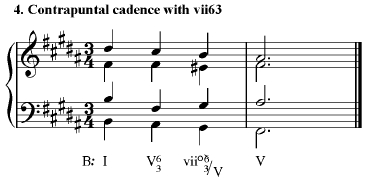
This is an example of a “contrapuntal cadence”, in which vii6 is used in a cadential sense. This is a very smooth way to affect an applied dominant, although using vii6 instead of V7 or V43. Note that Bach prefers this cadence for brief tonicizations such as here, and not for solid phrasal endings in the tonic.
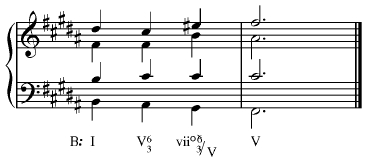
To help clarify the above cadence just a bit, here is the same thing using an applied V43.
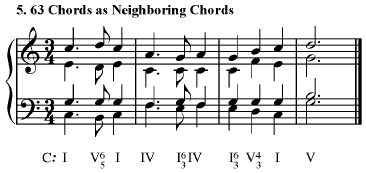
This use of a 63 as a neighbor tone is a bit old hat in the first measure, but note that in the second measure precisely the same idea is used to expand a IV. Just about any 53 chord, in fact, can be expanded via a neighboring 63.
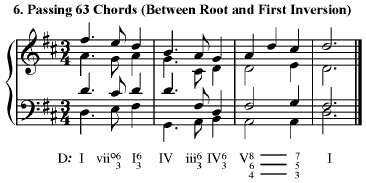
The first measure of this example is also old hat—the use of vii63 as a passing chord between I and I63. The same principle may be applied to other chords as well—in the second measure, a iii63 acts as a connective between IV and IV63.
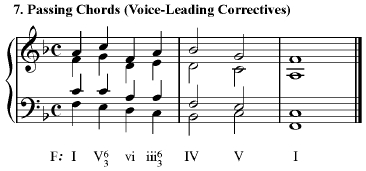
The use of a 63 chord as a voice-leading corrective here makes a sequence falling in thirds work.